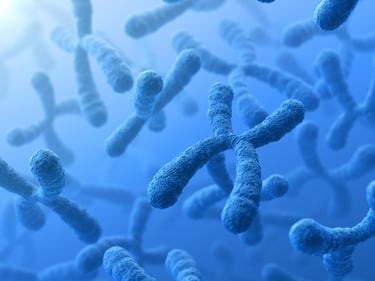eStoreRx™
Online Supplement Dispensary
eStoreRx™ is an easy direct-to-patient ordering & fulfilment program for lifelong wellness.
For over 40 years, Biotics Research Corporation has revolutionized the nutritional supplement industry by utilizing “The Best of Science and Nature”. Combining nature’s principles with scientific ingenuity, our products magnify the nutritional
eStoreRx™ is an easy direct-to-patient ordering & fulfilment program for lifelong wellness.
Biotics Research is proud to expand our commitment to education with the Wellness Unfiltered Pro Podcast. Each episode delves into key health topics and the clinical applications of our premier products. Through candid, insightful conversations, our team offers practical guidance to keep you informed and empowered as a healthcare professional.
December 18 2025
Low-carbohydrate diets are perhaps most popular for weight loss, but the strictest form of carbohydrate restriction – a ketogenic diet – has been show...

The chromosomes are our instruction manuals. They facilitate instructs on making every protein in the body, many of which are needed for life. Physically the chromosomes appear as “long necklaces of DNA, coiled and curled in the center of every cell in the body.” When it’s time to encode a gene, parts of the “necklace” open up and are loose, other parts “are coiled tightly or obscured by other sections of the chain.” When the chain is tightly coiled, it is more difficult “for the cell’s machinery to access the DNA in that section and [in turn to] activate the genes that DNA describes.” “New research by a team from UConn Health and the Jackson Laboratory for Genomic Medicine (JAX-GM) shows that our chromosomes age along with us, with some
sections of the chromosome curling and closing up, and making it harder to access DNA,” which may be critical in our defense against disease. What the authors observed is that “in young people, thousands of sites are open, seemingly ready to activate genes and make protein.” In “younger people there are genes and pathways that are very active, but these genes “appear to lose their activity in older adults.” Additionally, in younger people “the portions that are open and the portions that are closed look very different.” This study “determine[d] the regions of chromosomes and genes that lose their activity with aging.” In a “combined analyses of chromatin accessibility and the transcriptome [they] uncovered immune molecules activated/inactivated with aging.” They also “identified the silencing of the IL7R gene and the IL-7 signaling pathway genes as potential biomarkers.” “This signature is borne by memory CD8+ T cells.” It was observed that these cells “exhibited an aging-related loss in binding of NF-κB and STAT factors.” Thus, they “provide[d] a unique and comprehensive approach to identifying candidate biomarkers” as well as providing “mechanistic insights into aging-associated immunodeficiency.”
Ucar D, Márquez EJ, Chung C-H, Marches R, Rossi RJ, Uyar A, Wu T-C, George J, Stitzel ML, Palucka AK, Kuchel GA, Banchereau J. The chromatin accessibility signature of human
immune aging stems from CD8+ T cells. J of Exp Medicine. Sep 2017, jem.20170416; DOI: 10.1084/jem.20170416.
Submit this form and you'll receive our latest news and updates.
*These statements have not been evaluated by the Food and Drug Administration. This product has not intended to diagnose, treat, cure, or prevent any disease.
Proposition 65 Warning
© 2025 Biotics Research Corporation - All Rights Reserved
Submit your comment